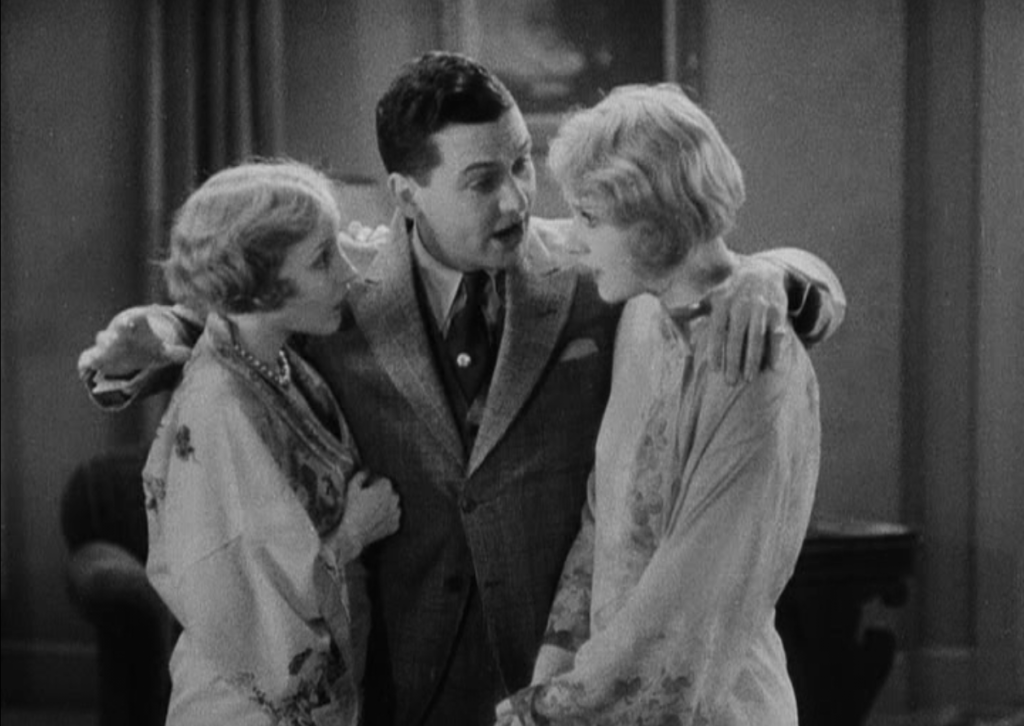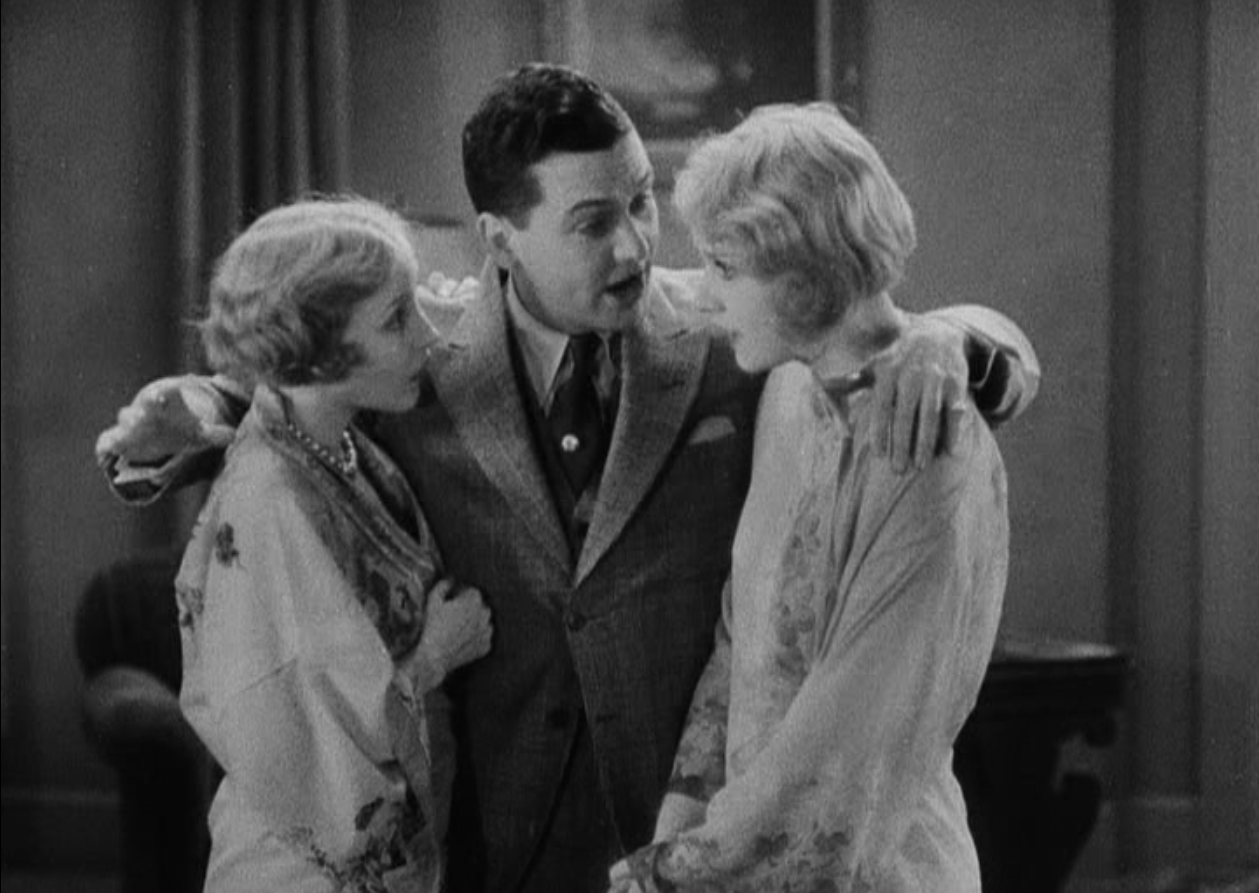Movie Review: The Broadway Melody (1929) directed by Harry Beaumont
Things are looking up for Eddie Kearns (Charles King). The singer/composer/dancer has managed to sell his latest song, “The Broadway Melody” to producer Francis Zanfield (Eddie Kane) to use in his new musical revue, sung by himself! Plus his fiancée Henrietta “Hank” Mahoney (Bessie Love) has come to town with her sister Queenie (Anita Page), fresh off doing reasonably well on the vaudeville circuit. If he can get them parts in the big show, their careers will be made too!

The girls’ agent, Uncle Jed (Jed Prouty, sporting a stammer) isn’t too optimistic about this career move, but Hank’s sure she and Queenie can hit it big. Hank has the brains of the sisters, and the business sense, while Queenie…Queenie’s pretty. Very pretty. When Eddie sees her for the first time since she hit puberty, he starts having attraction to his fiancée’s sister. And though Queenie tries to hide it, vice versa.
Zanfield isn’t too impressed with the sisters at first due to sabotage and Hank’s moxie clashing with his autocratic temperament, but does find Queenie attractive and reluctantly signs the package deal on. As the revue shapes up, one of Zanfield’s financial backers, Jacques Warriner (Kenneth Thomson) takes a fancy to Queenie and begins wooing her. Queenie is flattered, and trying to forget her traitorous feelings towards Eddie, so goes along despite everyone warning her Warriner’s bad news.
This movie was the first “talkie” to win the Best Picture Oscar, and for its time is something of a technical marvel. The movie sound industry was still in its infancy, and the cast and crew had to make a lot of innovations up as they went along. (There was a silent version made as many theaters still didn’t have sound systems.) So there’s singing, and orchestras playing, and sound effects and dancing. There was even a color section, though that’s been lost to time. And that technical wizardry is at least partly what won this movie the Oscar.
The musical numbers range from okay to quite good.
The story tucked in around the musical numbers is pretty thin as the actors try to make the love square look more dramatic than it is. The parts where the various show people are trying to put together the revue despite each other and Zanfield are more amusing, if a bit shallow. If you don’t like stories where women are primarily valued for their looks, this is not the movie for you. For those who enjoy history, Mr. Zanfield is obviously Florenz Zigfeld of “Zigfeld’s Follies” and Jacques Warriner seems to be a dig at rival studio Warner Brothers’ Jack Warner.
And naturally, modern audiences might be baffled at Queenie being considered just so much more desirable than Hank.
Content note: Attempted rape, some fisticuffs. The costume designer is a broad gay stereotype. Skimpy lingerie and showgirl costumes on the women, who sometimes hug and kiss each other in a way the Hays Code would soon not allow. Some outdated slang. Copious amounts of alcohol in some scenes despite Prohibition still being on.
Despite its flaws, the formula was set for other movies, including three more with the words “Broadway Melody” in the title. The disc I watched also came with “Dogway Melody” which parodied this movie and a couple of others with a cast of dogs performing on their hind legs in what I could only guess was some sort of animal abuse. (The British censors agreed and banned it there.)
This isn’t one of the great movies, or all that good of one, honestly, but it’s worth seeing because it has so many firsts and set the trends that other Oscar winners would follow.

